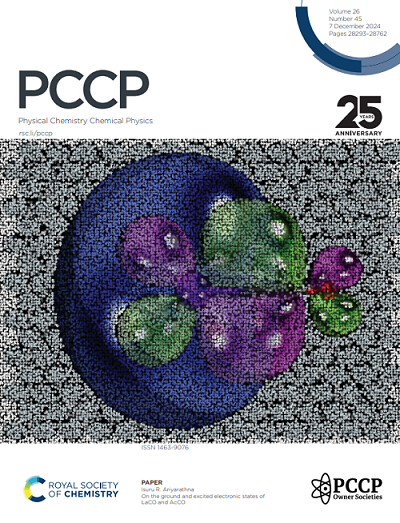Expanded ensemble predictions of toluene–water partition coefficients in the SAMPL9 LogP challenge
IF 2.9
3区 化学
Q3 CHEMISTRY, PHYSICAL
引用次数: 0
Abstract
The logarithm of the partition coefficient (logP) between water and a nonpolar solvent is useful for characterizing a small molecule's hydrophobicity. For example, the water–octanol logP is often used as a predictor of a drug’s lipophilicity and/or membrane permeability, good indicators of its bioavailability. Existing computational predictors of water–octanol logP are generally very accurate due to the wealth of experimental measurements, but may be less so for other non-polar solvents such as toluene. In this work, we participate in a Statistical Assessment of the Modeling of Proteins and Ligands (SAMPL) logP challenge to examine the accuracy of a molecular simulation-based absolute free energy approach to predict water–toluene logP in a blind test for sixteen drug-like compounds with acid-base properties. Our simulation workflow used the OpenFF 2.0.0 force field, and an expanded ensemble (EE) method for free energy estimation, which enables efficient parallelization over multiple distributed computing clients for enhanced sampling. The EE method uses Wang-Landau flat-histogram sampling to estimate the free energy of decoupling in each solvent, and can be performed in a single simulation. Our protocol also includes a step to optimize the schedule of alchemical intermediates in each decoupling. The results show that our EE workflow is able to accurately predict free energies of transfer, achieving an RMSD of 2.26 kcal/mol, and R2 of 0.80. An examination of outliers suggests that improved force field parameters could achieve better accuracy. Overall, our results suggest that expanded ensemble free energy calculations provide accurate first-principles logP prediction.求助全文
约1分钟内获得全文
求助全文
来源期刊

Physical Chemistry Chemical Physics
化学-物理:原子、分子和化学物理
CiteScore
5.50
自引率
9.10%
发文量
2675
审稿时长
2.0 months
期刊介绍:
Physical Chemistry Chemical Physics (PCCP) is an international journal co-owned by 19 physical chemistry and physics societies from around the world. This journal publishes original, cutting-edge research in physical chemistry, chemical physics and biophysical chemistry. To be suitable for publication in PCCP, articles must include significant innovation and/or insight into physical chemistry; this is the most important criterion that reviewers and Editors will judge against when evaluating submissions.
The journal has a broad scope and welcomes contributions spanning experiment, theory, computation and data science. Topical coverage includes spectroscopy, dynamics, kinetics, statistical mechanics, thermodynamics, electrochemistry, catalysis, surface science, quantum mechanics, quantum computing and machine learning. Interdisciplinary research areas such as polymers and soft matter, materials, nanoscience, energy, surfaces/interfaces, and biophysical chemistry are welcomed if they demonstrate significant innovation and/or insight into physical chemistry. Joined experimental/theoretical studies are particularly appreciated when complementary and based on up-to-date approaches.
 求助内容:
求助内容: 应助结果提醒方式:
应助结果提醒方式:


